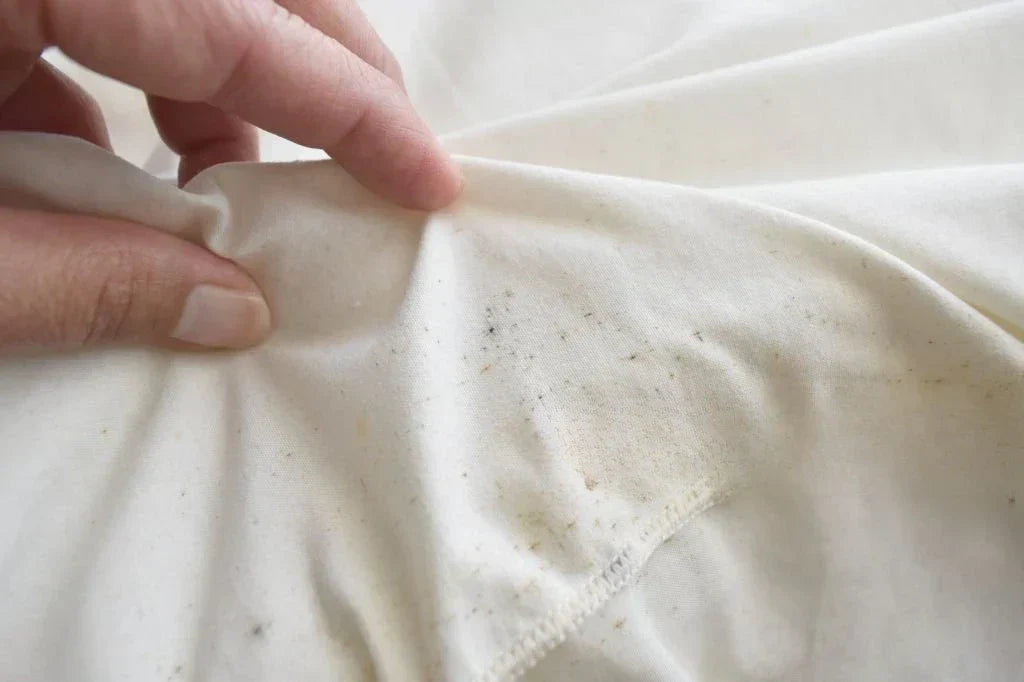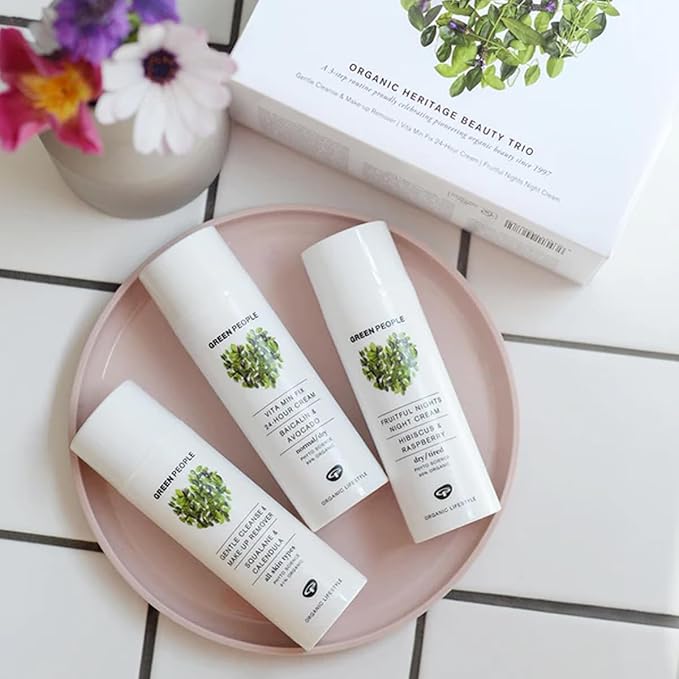Living by the river is a dream for many, but the extra moisture, wind and flood risk mean your windows do far more than frame a pretty view. The right glazing helps keep condensation, draughts and noise under control while making your home more energy-efficient. From high-performance double glazing and moisture-resistant uPVC or composite frames to clever styles like tilt-and-turn, casement or awning windows, small design choices can make a big difference to comfort and heating bills in a riverside home. Even large sliding or fixed picture windows can be part of a low-impact home when paired with quality seals and thermally efficient glass. On Friendly Turtle EcoBlog, we love exploring these practical, planet-friendly upgrades the kind that protect your home, tread more lightly on local waterways and still let you enjoy those calming river views day after day.
Share your articles with us and get published! Reach out at hello@friendlyturtle.com.
How to Get Rid of Bed Bugs – The Natural Way

You're tired of sleepless nights and itchy bites. Bed bugs can wreak havoc, undermining your comfort and peace of mind. Luckily, there are proven ways to banish them for good.
You want fast relief and lasting solutions. Sealing entry points, vacuuming thoroughly, and leveraging heat treatments stop bed bugs in their tracks. Expert guidance protects your home against repeat infestations.
For a specialized answer, turn to Bed Bug Specialist. Focused techniques and inspections tackle the root of your infestation, restoring peace of mind and freeing you from these pests.
Identify Bed Bug Infestation Signs
Identifying bed bugs can be tricky, when they hide in mattresses or crevices. Recognizing bites, stains, or shells is crucial for early detection and intervention.
Early Bite Indicators
Bite patterns often appear in clusters near exposed skin. These could be red, itchy welts that form overnight, indicating potential bed bug activity at home.
Rust-Colored Stains
Reddish smears on sheets or pillowcases may often suggest crushed bugs after a feeding. Checking linens thoroughly can reveal overlooked signs of a hidden infestation.
Exoskeleton Remnants
Bed bugs shed their skins as they mature. You might spot translucent husks near mattress seams, carpets, or furniture joints during a detailed inspection.
Musty Bed Bug Odor
A sweetly pungent smell can arise during heavy infestations. This odor usually comes from the bugs' scent glands and significantly intensifies when colonies grow larger.
Contain and Prevent Infestation Spread
Containing bed bugs means restricting their movement and avoiding new infestations. Simple measures, when practiced consistently, help prevent problems from spiraling out of control quickly.
- Check luggage carefully after traveling to avoid bringing hidden bed bugs home.
- Place clothing in sealed bags if using shared laundry facilities for better containment.
- Seal cracks with caulk to reduce passageways where bed bugs might migrate or nest.
- Vacuum floors frequently, focusing on corners and baseboards where insects could congregate.
- Limit clutter in sleeping areas to reduce potential bed bug hiding spots.
Staying alert to potential sources makes a difference, especially when bed bugs spread through personal belongings. Avoiding second hand mattresses also effectively protects your living space.
Always store possessions mindfully. A small gap in protocol can transform a minor issue into a severe bed bug outbreak requiring intensive cleanup and extermination.
Effective Non-Chemical Bed Bug Treatments
Some solutions rely on methods that don't incorporate harsh chemicals. Relying on mechanical or atmospheric strategies can eliminate near-invisible pests without introducing pesticide residues indoors.
Vacuum for Control
Using a high-suction vacuum with a crevice tool removes adults and eggs from seams or upholstery. Dispose of contents in sealed bags to prevent escapes.
Steam Treatments
High-temperature steam can penetrate deep into mattresses, carpets, and furniture. Apply slow, deliberate passes so intense heat thoroughly kills bed bugs and their hidden eggs.

Laundering at High Heat
Washing and drying clothes, bedding, or curtains at elevated temperatures zaps bed bugs effectively. Immediately store treated items in sealed containers for safe continued protection.
Bed Encasements
A mattress cover designed for bed bug defense serves as a barrier. This tactic traps insects inside, limiting more feeding opportunities and preventing future breeding.
Chemical Treatment Methods That Work
Sometimes you need chemical solutions to tackle stubborn infestations. Professional-grade pesticides and consumer products both play a role in disrupting bed bugs' life cycle effectively.
- Follow label instructions diligently to ensure safety during pesticide application.
- Use residual sprays around baseboards and cracks for ongoing protection against re-emergence.
- Combine multiple formulations like aerosols, dusts, and concentrates for broader coverage.
- Keep pets away from treated rooms until products fully dry and settle.
- Rotate products occasionally to reduce the chance of bed bug resistance.
Working with licensed professionals can guide you in choosing effective solutions. Some pesticides suit particular stages of infestation, while others effectively cover multiple developmental phases.
Be mindful of repeated usage, as overapplication might cause unnecessary exposure. Thorough health considerations matter, so always wear protective gear when handling chemical-based pest control.
Finally, store leftover pesticides completely responsibly. Double-check expiration dates, and discard outdated products according to local regulations to maintain a safe environment for everyone involved.
Pros and Cons of Heat Treatments
Using high heat to eradicate bed bugs is often effective but demands proper equipment. This method addresses severe infestations without relying heavily on chemical pesticides.
Penetration Power
Heat offers penetration of furniture, walls, and floorboards to deeply eliminate hidden bugs. With careful monitoring, temperatures can reach lethal levels in even tucked-away crevices.
High Equipment and Labor Costs
Renting or purchasing specialized heaters can be expensive. Additionally, expert operators must consistently check complex temperatures, which seriously adds to overall labor and time investment.
Minimal Chemical Exposure
Families concerned with toxins favor heat treatments for their eco-friendly nature. It reduces chemical residue, resulting in fewer major health risks for pets or children.
Risk of Reinfestation
When heat treatments lack sufficient duration or coverage, some bed bugs survive. Without thorough follow-up, pockets of missed bugs can quickly spark another unnoticed infestation.
Cold Treatments for Bed Bug Extermination
Freezing bed bugs can work under certain circumstances. Low temperatures immobilize and kill these pests, though consistent chilling is required for reliable, long-lasting extermination results.
- Commercial freezing devices can treat specific items or isolated infestations effectively.
- Use plastic bags when placing smaller objects in freezers for targeted methods.
- Allow enough time at subzero temperatures to ensure complete bug eradication.
- Monitor freezer settings to maintain a consistent cold environment throughout treatment.
- Inspect items thoroughly after removing them to confirm no live pests remain.
This approach can be less intrusive but demands absolute patience. Repeated sessions might be necessary if temperatures fail to remain low enough for complete elimination.
Another limitation is scale. Treating large furniture or entire rooms with freezing methods can be tricky, requiring specialized equipment or professional assistance for adequate reach.
Evaluation of your infestation size and resources helps determine whether cold treatments suffice. Balance this strategy with other methods for better, long-term bed bug control.
Choosing the Right Bed Bug Exterminator
Selecting a professional is a game changer if your infestation seems unmanageable. Expertise and track records often indicate who can truly deliver thorough, lasting solutions.
Look for Licenses
A legitimate exterminator typically holds proper certification. Reviewing relevant credentials hugely reduces the risk of hiring someone without fundamental bed bug knowledge or proven methods.
Check Service Options
Some companies choose conventional chemicals, while others offer integrated approaches. Understanding these choices ensures you match the exterminator's toolkit with your home's specific unique needs.
Read Customer Feedback
Looking at trusted review sites helps gauge consistency in performance. Feedback often highlights successful outcomes, missed areas, or any necessary additional steps required after visits.
Transparent Pricing Structures
Reputable exterminators provide clear quotes outlining each service. Transparent costs include follow-up visits or supplementary applications, so you won't face surprise fees midway through treatment.
Bed Bug Home Remedies: Effective or Not?
Many swear by home tricks, hoping to reduce pests without professional help. While some approaches offer partial relief, others potentially risk breeding stronger, pesticide-resistant insects.
- Diatomaceous earth scratches bug exoskeletons but needs frequent reapplication for success.
- Essential oils may repel bugs temporarily but rarely resolve major infestations.
- Double-sided tape placed near beds can catch insects searching for meals.
- Baking soda lacks robust evidence of eliminating bed bugs or eggs.
- Alcohol sprays might kill on contact but evaporate quickly, leaving survivors.
Relying too heavily on these methods can prolong infestations. Partial success tempts bugs to eventually relocate, making your home environment even harder to purge thoroughly.
However, combining certain remedies with professional intervention can have merit. Using diatomaceous earth alongside targeted heat or steam treatments sometimes significantly enhances overall extermination outcomes.
Be realistic with expectations. Substituting home remedies for proven methods without proper follow-up often leaves hidden pockets of bed bugs ready to easily reemerge later.
Post-Treatment Bed Bug Monitoring Tips
Even after extermination, thorough monitoring prevents rebounds. Keeping track of remaining bugs and possible reintroductions is truly essential for maintaining a bed bug-free living environment.
Regular Inspections
Keep inspecting common nesting areas, including mattress seams and headboards. Quick detection of leftover bugs allows for immediate corrective actions that potentially stop major resurgences.
Utilize Interceptor Traps
Place plastic interceptors under bed legs to trap residual pests. These devices effectively catch crawling bed bugs, letting you gauge ongoing activity without complicated equipment.
Follow-Up Treatments
Sometimes an extra service visit is necessary if an infestation was extensive. Scheduling another treatment early can suppress survivors before they spread throughout your home.
Clean and Declutter Frequently
Regular vacuuming and disposing of unused items deprive bed bugs of hiding spaces. A tidy environment effectively hampers their ability to fully regroup after treatment.
Swift, Secure Solutions
You can confidently end your bed bug woes by combining targeted strategies with professional advice. Remember to wash at 60 degrees to destroy any bed bug eggs and ensure your future peace of mind. Use these tips with diligence.
0 comments
Let customers speak for us
Blog posts
Making your own ice might seem like a tiny habit, but it can quietly cut waste and carbon in a big way. When you freeze water at home in reusable trays or an efficient freezer, you skip the single-use plastic bags, transport emissions and constant industrial refrigeration that come with store-bought ice. You also control the quality of the water you freeze, which means cleaner cubes in your glass and fewer hidden additives in your drinks. With a modern, energy-efficient freezer or under-counter ice maker, the electricity you use stays local, steady and relatively low impact especially if you’re already trying to run a lower-waste kitchen. Pair that with thoughtful water use (only freezing what you need) and suddenly a very ordinary daily habit becomes part of your sustainability toolkit. On Friendly Turtle EcoBlog, we love these small, repeatable swaps the kind that fit neatly into everyday life while still nudging your home towards a lighter footprint.
Utility trailers are a surprisingly powerful ally in sustainable gardening and low-waste home care. As highlighted in this Friendly Turtle EcoBlog post, they simplify the movement of garden waste, compost, and reclaimed materials, encouraging greener routines with less effort. Whether you’re trimming hedges, tidying your shed, or tackling DIY repairs, a trailer makes the process smoother and reduces fuel use and plastic reliance. It also supports better organisation and smarter recycling. Choosing the right trailer helps avoid overconsumption while extending the life of your tools. This simple addition turns everyday tasks into eco-conscious actions and makes it easier to maintain a cleaner, greener garden all year round.



